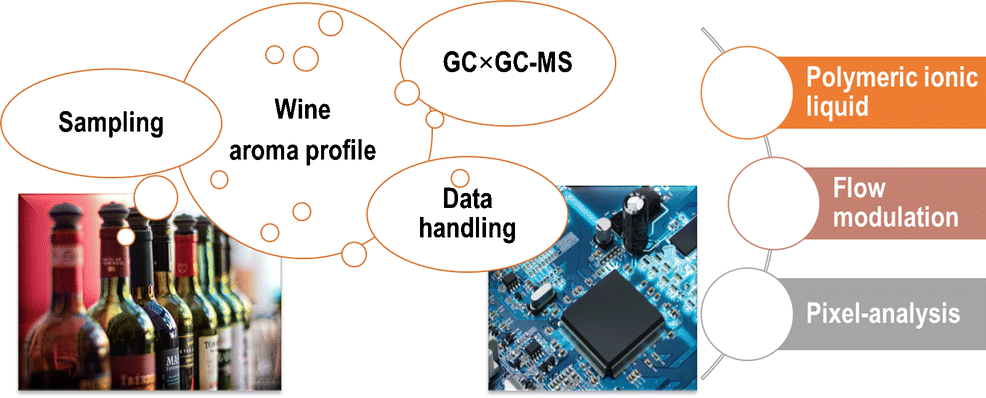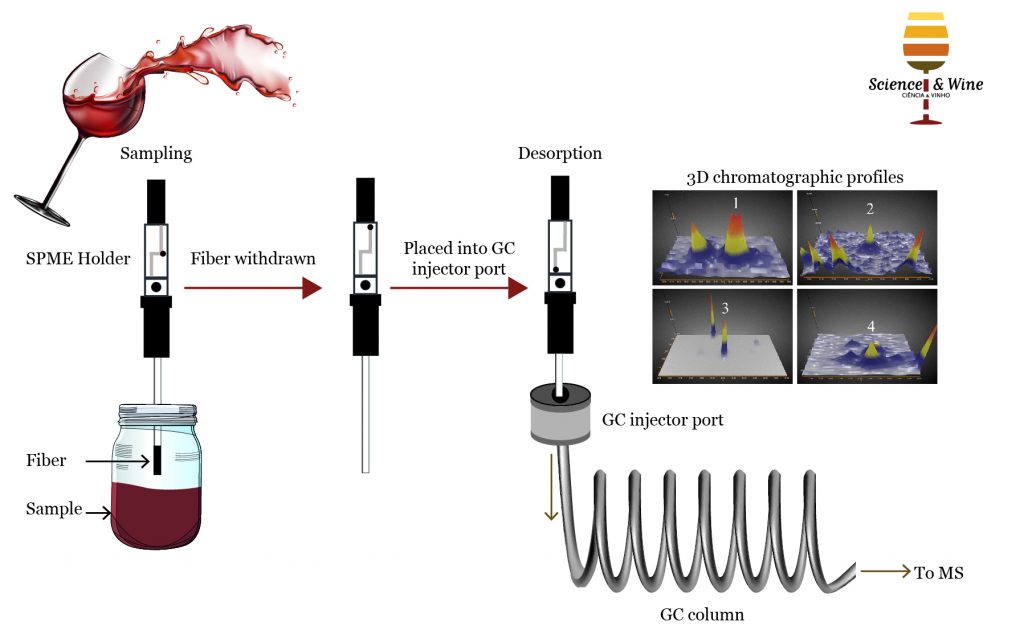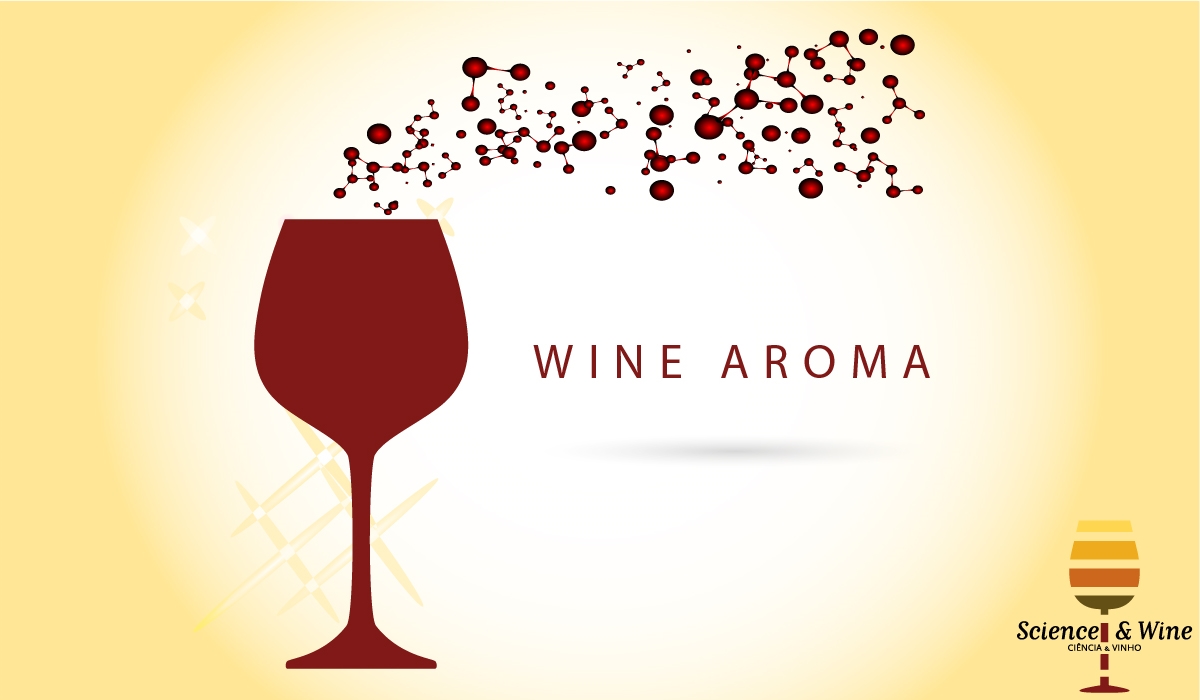By Leandro Wang Hantao
Viticulturists and vintner carefully address the chemistry of winemaking (ripening, fermentation, and maturation) to bestow a symphony of unique and pleasant flavors to the final product (Crucello et al, 2018). Aroma is one the main factors contributing to the quality of wine and sets the difference between a vast number of wines and wine styles produced throughout the world (González Álvarez et al., 2011). The volatile organic compounds (VOCs) are a highly complex fraction of wine with more than 1 000 volatile compounds reported so far (Arcari et al., 2017).

Multi-faceted analytical methods are required for profiling of wine aroma. For instance, sample preparation comprises nearly 61% of the time spent on a typical chromatographic analysis, being accounted for 30% of sources of error. The use of non-specific sorbent phases in these protocols aims to extract as much chemical information as possible from the sample. In addition, mild isolation conditions are required to avoid extraction artifacts that originate from sample deterioration and / or contamination (Rivellino et al., 2013). These extraction artifacts, if not properly assigned, may induce misleading interpretation of qualitative results. Over the past decade, modern sample processing has relied on equilibrium-based (i.e., non-exhaustive) approaches. For example, headspace solid-phase microextraction (HS-SPME) is a solvent less, equilibrium-based sample preparation technique that combines sampling and sample preparation into a single step, which may be performed relatively fast and under mild extraction conditions. HS-SPME is likely the ideal tool for aroma profiling of wines because it requires minimal sample handling and it bypasses the co-isolation of non-volatile organic compounds.
In the past decades, SPME sorbent materials have been comprised of modified counterparts of polymeric absorbents, such as poly(siloxane), poly(glycol), and poly(acrylate), and solid adsorbents, including poly(divinylbenzene) and activated charcoal (e.g. Carboxen). A recent hallmark was the introduction of ionic liquid-based sorbents as SPME coatings (Zhao, Meng, and Anderson, 2008). Ionic liquids (ILs) are organic salts that exhibit melting points at or below 100°C. This class of materials has gained increased attention because their solvation properties (i.e., selectivity) may be modulated by simple structural modifications to the cation and anion moieties (Ho et al., 2013). Thus, remarkable extractions have been attained using polymeric ionic liquids (PILs) in SPME experiments.
Brazilian winemaking is experiencing profound changes in an effort to improve the quality of grape juice and wines, while proving products with unique signatures. The manuscript entitled “Characterization of the aroma profile of novel Brazilian wines by solid-phase microextraction using polymeric ionic liquid sorbent coatings” described the coupling PIL-based SPME to comprehensive two-dimensional gas chromatography – mass spectrometry (GC×GC-MS) for sensitive and reliable molecular analysis of wine aroma. In addition, our group has developed simple data mining protocols to extract meaningful information from big data by non-expert users. We are eager to continue our research with wines to help small viticulturists and vintners to produce high-quality and unique Brazilian products.
Those interested in a longer length report can download the working paper at:
https://link.springer.com/article/10.1007/s00216-018-1134-3


Leandro Wang Hantao is an Assistant Professor and joined the Institute of Chemistry (University of Campinas, Brazil) in May 2017. He earned this B.Sc. in 2009 and Ph.D. in 2014 from the University of Campinas. In 2013, he was appointed a visiting scholar position at the University of Toledo (USA). From 2015 to 2017, he held a Scientist position at the Brazilian Nanotechnology National Laboratory. His research interests are focused on analytical and bioanalytical chemistry.
References
- Crucello, L. F. O. Miron, V. H. C. Ferreira, H. Nan, M. O. M. Marques, P. S. Ritschel, M. C. Zanus, J. L. Anderson, R. J. Poppi, L. W. Hantao Anal. Bioanal. Chem. (In press). https://doi.org/10.1007/s00216-018-1134-3
- González Álvarez, C. González-Barreiro, B. Cancho-Grande, J. Simal-Gándara Food. Chem. 129 (2011) 890-898. https://doi.org/10.1016/j.foodchem.2011.05.040
- G. Arcari, V. Caliari, M. Sganzerla, H. T. Godoy Talanta 174 (2017) 752-766. https://doi.org/10.1016/j.talanta.2017.06.074
- F. Zhao, Y. Meng, J. L. Anderson J. Chromatogr. A 1208 (2008) 1-9. https://doi.org/10.1016/j.chroma.2008.08.071

